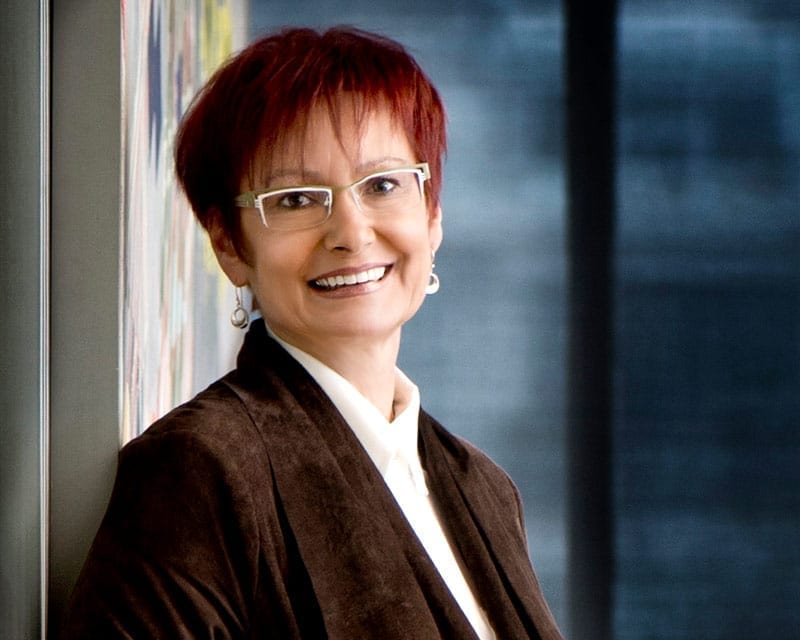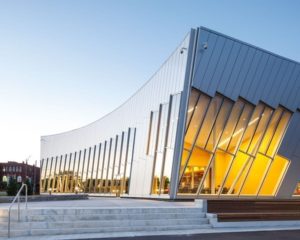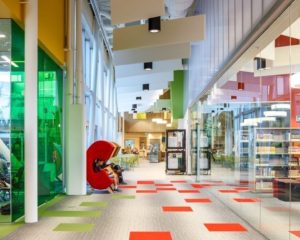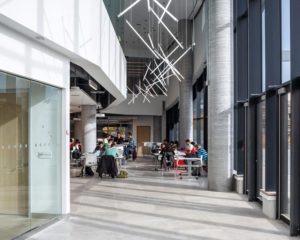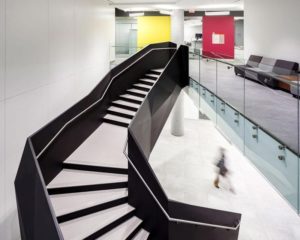Interviews

Graceful design | by Diana Friedman
Ella Mamiche has over 30 years of experience as a designer in one of Canada’s busiest cities – Toronto. The only female Principal at ZAS Architects + Interiors, Mamiche has helped grow the firm’s interiors division and contributed to an impressive 23 awards for their projects. With a particular focus and love for institutional buildings, Mamiche shares some wisdom to aspiring designers and tells us about her experiences as a woman working in a predominantly male-centered profession.
What inspired you to become an architect and designer?
It’s hard to say if it was exactly one thing that inspired me. I suppose I have always had passion and curiosity for people; but also equally for art, history, buildings, environments. Being a designer allows me to combine all of these “ingredients” that I love. These parts are like a marriage of disciplines, a broad range of them and that’s what makes interior architecture dynamic. From abstract art to the linear sciences. And then there’s human behavior, to add, which is paradoxically, highly predictable and highly irrational all at the same time!
Design answers a lot of existential questions, and I’ve always loved exploring those layers.
What are some obstacles and advantages you find as a woman working in a traditionally male dominated industry?
Women should be aware of the differences and inequalities for all of humanity – I would advise every woman to stay cognizant of the effects that comparison to men might have on her self-esteem and her ability to feel competent in complex work environments.
A young designer should focus on their own personal development and empowerment and not that of others; identifying their unique attribute, character or talent and what’s sets them apart – this builds resilience. Builds a solid “foundation” so to speak.
In this day, to be a professional woman is highly competitive, she must write her own narrative without a handbook on how to overcome challenges previously unchallenged. Instead of delineating the differences between genders in this industry, it is vital for an individual to take personal growth into their own hands. There is a lot of competition out there. I encourage young designers to think deeply about gender inequality but also to actively exercise the kinds of habits that perpetuate fairness, equal opportunity and develop an appreciation for the diversity of life.
A woman must reach for her own renaissance – the elegance, effervescence, creativity a woman could bring into this world is a powerful idea, she could be an “architect of positive social change” we could all be, no matter our gender.
Despite the disadvantages, there are certainly some positive takeaways and advantages to being a woman in architecture. Females are naturally more passionate and more intuitive. The challenges have taught me to be more persistent and value hard work in order to succeed. I’ve certainly become an excellent multi-tasker and handle communication with contractors more gracefully. Overall, we women are compassionate, driven, committed and creative!
You work on a number of institutional projects. What materials do you find are most conducive for these types of buildings?
Performance and safety are the most important criteria in selecting finishes for public buildings. These key factors really apply to everything we build – but of course, largely to institutional projects. Some of these recent institutional projects include The Digital Media Lab at The University of Waterloo (Stratford Campus), The Vaughan Civic Centre Public Resource Library and The Bergeron Centre for Engineering Excellence at York University, which was also a Ceramics of Italy Tile Competition winner this year!
- Vaughan Civic Centre Public Resource Library
- Vaughan Civic Centre Public Resource Library
How do you see Italian ceramics developing in the future? What do you think companies should focus on when developing ceramic materials?
The most recent trend that I’ve noticed is companies focusing more effort on developing large format products with new textures. There are endless possibilities to the types of materials they can replicate, and new technology will allow Italian ceramics to move further into the three-dimensional world.
Can you share some advice for aspiring architecture and design students?
Although so much architecture and design is handled on a computer, I truly encourage students to draw and sketch. Drawing isn’t just a way of communicating with others; it is a way of thinking. Travel is also an invaluable source of inspiration. Another important tip is to set big goals that you can strive towards. Even if you are making small incremental progress, continue working towards the big ideas. Finding design role models is also very important. If you can, try to get to know them. There is a lot to be shared and learned between generations.
Particularly to female students in architecture or design: Instead of saying “I can do what a man does,” why not try “I can do different things than a man can do”. Add value in the process and change the nature of the competition. Collaboration is the key to success.
- Bergeron Centre for Engineering Excellence at York University
Is there anything you wish you knew when you started your career?
I do wish I had more confidence in myself as a young designer. This is hard to develop but important for success, as well as the ability to ignore intimidation. You see a lot of that in architecture school and cannot allow it to sway your focus.
Ella has focused her extensive career on bringing together passion, people and process whether designing new office environments, transforming a warehouse into unique and functional space or refurbishing the interiors of a hotel. A longstanding member of the ZAS team, Ella first joined the firm back in 1983 where her key involvement has since helped establish the Interiors group. She is a leader in innovative and flexible design solutions by implementing a highly creative process balanced with a uniquely collaborative approach. As a Principal of ZAS Interiors she oversees initiatives related to design, client development and strategic growth. She focuses her creative insight into the design and planning process to ensure the production of innovative, classic, engaging and functional design are created for every client, site, and most importantly every user who will benefit from the space. Ella has worked with a number of the firm’s diverse clientele including corporate, educational, hotel/residential and government and received 23 awards for her projects.
August 2018




